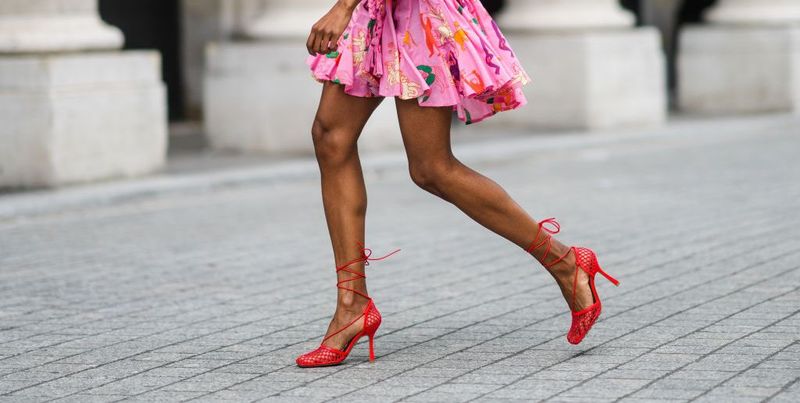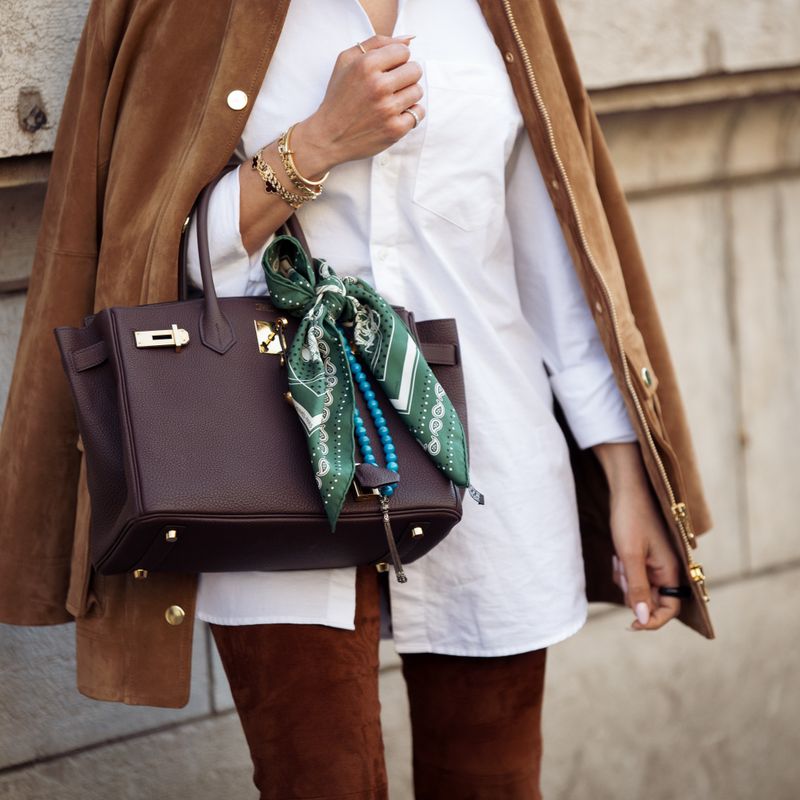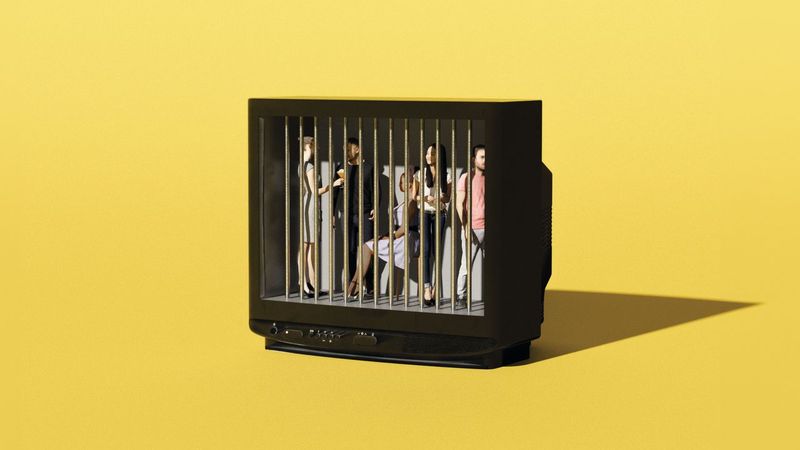Remember when staying up all night felt like an adventure rather than a punishment? For women born in the 1970s, time has shifted not just their appearance but also their preferences. Those who once rocked big hair and danced to Madonna have evolved in their tastes, priorities, and tolerances. As responsibilities grow and wisdom deepens, many things that once brought joy now feel more like burdens.
1. All-Night Parties That Leave You Wrecked
Dancing until sunrise used to feel exhilarating. The throbbing music, the endless energy, the sense that the night held infinite possibilities – it was magical!
Now? The mere thought of staying vertical past midnight triggers anxiety about the recovery time needed. The two-day hangover aftermath hardly seems worth those few hours of fun.
Most women who came of age in the 80s and 90s now prefer quality gatherings that end at a reasonable hour, leaving time for a proper skincare routine and maybe even finishing that book on the nightstand.
2. Uncomfortable Footwear Just For Looks
Those sky-high stilettos once represented sophistication and sex appeal. Women endured pinched toes, blisters, and aching arches for that extra height and leg-lengthening effect.
Fashion priorities have shifted dramatically. Comfort now rules the closet decisions of women who grew up idolizing Madonna’s pointy bras and Melanie Griffith’s power heels.
Stylish flats, cushioned platforms, and even orthopedic-friendly options have replaced the torture devices formerly known as sexy shoes. The realization finally sank in: no outfit is worth physical pain or the inability to walk properly the next day.
3. Drama-Filled Friendships That Drain Energy
Remember the friend who always had a crisis? The one who turned every gathering into an emotional rollercoaster? These relationships once provided excitement and a sense of being needed.
Women who grew up in the era of “The Breakfast Club” and “St. Elmo’s Fire” now recognize the value of peaceful connections. The constant drama, gossip cycles, and emotional vampirism have lost their appeal.
Life offers enough genuine challenges without manufactured ones. Friendships that provide mutual support, honest communication, and drama-free enjoyment have become the gold standard. The emotional bandwidth for chaos simply doesn’t exist anymore.
4. Crowded Nightclubs With Deafening Music
The pulsating lights, shoulder-to-shoulder dancing, and music so loud you had to scream conversations – these were once the hallmarks of an epic weekend. Women born in the 70s lined up outside clubs, eager to be part of the scene.
Fast forward to today, and the thought of navigating sticky floors while shouting basic sentences holds zero appeal. The crushing crowds, overpriced drinks, and inevitable ringing ears afterward seem like unnecessary punishment.
A comfortable living room with good friends, quality wine, and background music at a volume that permits actual conversation has become the new definition of a perfect night out.
5. Restrictive Diets Promising Miracle Results
The 80s and 90s bombarded young women with diet culture – from liquid fasts to fat-free everything. Magazine covers promised the perfect body was just one crazy diet away.
Women who weathered those body-obsessed decades have largely abandoned the restrictive eating patterns that dominated their youth. Many now embrace intuitive eating, focusing on how food makes them feel rather than how it might change their appearance.
The mental freedom from constant calorie-counting feels revolutionary. Health, energy, and enjoyment have replaced the punishing cycles of deprivation that once seemed like normal female behavior.
6. Standing-Room-Only Concerts Without Breaks
“You’re not a real fan if you don’t get there early for front-row standing room!” That mindset once drove women to endure hours of discomfort for proximity to their favorite bands. The bragging rights of surviving the mosh pit seemed worth the exhaustion.
Concert experiences have evolved dramatically for women who grew up with cassette tapes and MTV. Reserved seating, VIP packages, and venues with actual chairs have become non-negotiable.
The music still matters deeply, but so do bathroom access, the ability to set down a drink, and not having someone’s sweaty back pressed against you for three hours. Comfort doesn’t diminish fandom – it enhances the experience.
7. Ironing Everything In Your Wardrobe
Sunday evenings once included the ritual of ironing the entire week’s wardrobe. Crisp collars, perfectly pressed pants, and wrinkle-free everything were considered essential for presenting yourself as a put-together adult.
The liberation from this time-consuming chore has been glorious! Women who came of age during the Reagan era have largely embraced wrinkle-release sprays, dryer techniques, and simply caring less about minor fabric imperfections.
Many have curated wardrobes featuring low-maintenance fabrics that look polished without the extra effort. The time formerly devoted to ironing has been reclaimed for activities that actually bring joy rather than just societal approval.
8. Hauling Around Gigantic Purses Full Of “Just In Case” Items
The massive purse – part status symbol, part portable emergency kit – was once a staple accessory. Women who grew up watching “Working Girl” and “9 to 5” often carried bags that could double as overnight luggage.
Those shoulder-straining monsters contained everything from full makeup kits to mini sewing sets, “just in case” something happened. The physical toll of carrying around half your possessions became increasingly apparent with each passing year.
Streamlined crossbody bags and even phone wallets have replaced these former arm weights. The realization that most “emergencies” never materialized freed many from the self-imposed burden of constant over-preparation.
9. Saying Yes When You Really Mean No
The socialization to be accommodating runs deep for women who came of age in the 80s and 90s. Agreeing to commitments you dreaded, helping people who never reciprocated, attending events you had zero interest in – all to avoid being labeled “difficult.”
The gradual awakening to the power of “no” has been revolutionary. Many women now recognize that people-pleasing often leads to resentment, burnout, and inauthentic relationships.
Setting boundaries doesn’t make you selfish – it makes you sustainable. This hard-won wisdom allows for more genuine connections and the energy to fully invest in the things that truly matter.
10. Trendy Clothes That Sacrifice Basic Comfort
Fashion in the 80s and 90s wasn’t exactly known for prioritizing comfort. From acid-wash jeans so tight they required lying down to zip them up to whale-tail thongs deliberately showing above low-rise pants – style often meant suffering.
Women who survived these uncomfortable trends have largely recalibrated their fashion priorities. The question is no longer just “How does this look?” but “How does this feel on my body?”
Elasticized waistbands, breathable fabrics, and designs that accommodate real human movement have replaced the restrictive garments once endured in the name of fashion. Looking good and feeling good no longer seem like mutually exclusive concepts.
11. Endless Social Media Scrolling Without Purpose
Remember the initial excitement of reconnecting with high school classmates on Facebook? Women who grew up without the internet embraced social platforms with enthusiasm, often spending hours scrolling through updates.
The shine has worn off considerably. Many now view excessive social media consumption as a time thief that delivers diminishing returns on emotional well-being.
Intentional usage has replaced mindless scrolling. Setting time limits, curating feeds to include only genuinely meaningful connections, or even taking extended breaks has become common practice. The recognition that virtual connection often comes at the expense of real-world engagement has shifted priorities dramatically.
12. Glorifying Extreme Multitasking As A Virtue
The ability to juggle multiple responsibilities simultaneously was once worn as a badge of honor. Women raised on “having it all” messaging prided themselves on cooking dinner while helping with homework while joining a conference call.
Research has since revealed the cognitive cost of constant task-switching. Many women now recognize that multitasking often means doing several things poorly rather than one thing well.
The shift toward single-tasking and presence has been liberating. Focusing fully on one activity – whether work, family time, or self-care – allows for deeper engagement and satisfaction. The pressure to constantly demonstrate productivity through frantic juggling has mercifully subsided.
13. Marathon Phone Conversations About Nothing Important
Hours-long phone calls were once the social lifeline for teenage girls of the 70s and 80s. The cord stretched to its limit for privacy, conversations meandering from crushes to homework to TV shows.
Technology and life stage have transformed communication preferences. The thought of a three-hour phone call now seems more exhausting than exciting.
Efficiency has become the new connection currency. Quick texts, voice messages, or focused video calls accomplish the same goal without the time commitment. The nostalgic memory of those marathon calls remains sweet, but few would voluntarily return to that communication style given today’s packed schedules.
14. Creating Pinterest-Perfect Holiday Celebrations
The pressure to create magazine-worthy holiday moments once drove women to exhaustion. Handcrafted decorations, elaborate meals from scratch, and perfect coordination of every detail seemed essential to “doing it right.”
Many women who grew up with these expectations have embraced a more relaxed approach to celebrations. Store-bought contributions, simplified decorations, and an emphasis on connection over perfection have replaced the stress-inducing standards.
The realization that no one remembers whether the napkins matched the tablecloth, but everyone remembers whether the host was present or frazzled, has shifted priorities. Enjoyment has finally taken precedence over impression management.
15. Binge-Watching Reality TV Drama
The early days of reality television captivated many women who grew up without this genre. Shows featuring extreme competitions, manufactured conflicts, and outrageous personalities provided escapist entertainment after long workdays.
The appetite for manufactured drama has significantly diminished for many in this demographic. The constant conflict, artificial storylines, and promotion of unhealthy relationships no longer provide the same entertainment value.
Many now gravitate toward content that educates, inspires, or simply soothes. Documentaries, thoughtful fiction, or even calm competition shows like baking competitions have replaced the high-drama offerings that once dominated viewing habits.
16. Impulse Shopping For Trendy, Disposable Fashion
The thrill of snagging the latest fast-fashion trend once provided a quick dopamine hit. Women who came of age during mall culture often accumulated closets full of inexpensive, of-the-moment pieces.
Environmental awareness, quality considerations, and shifting values have transformed shopping habits. Many now approach their wardrobes with a more curatorial mindset, investing in fewer, better-made pieces that transcend seasonal trends.
The concept of cost-per-wear has replaced the excitement of constant newness. A well-made item that lasts for years ultimately delivers more satisfaction than a drawer full of disposable pieces that pill, fade, or fall apart after a few wearings.
17. The Constant Pressure To Upgrade Technology
Remember the excitement of each new gadget release? Women who witnessed the birth of personal computing often felt compelled to keep pace with every technological advancement, regardless of actual need.
The exhausting cycle of continuous upgrades has lost its appeal for many. If the current phone takes decent photos and handles necessary apps without crashing, the marginal improvements of the newest model hardly justify the expense.
Technology has shifted from exciting novelty to practical tool. Many now approach upgrades selectively, based on genuine improvements to daily life rather than marketing hype or status signaling. The freedom from constant tech FOMO feels surprisingly liberating.
18. Being The Peacekeeper At Any Personal Cost
“Don’t rock the boat” was practically a mantra for women raised in the 70s and 80s. Smoothing over conflicts, swallowing legitimate grievances, and prioritizing harmony over honesty were considered feminine virtues.
The exhaustion of constant emotional labor eventually became unsustainable. Many women realized that keeping the peace often meant sacrificing their own peace of mind.
Speaking truth, even when uncomfortable, has replaced artificial harmony as a relationship value. Addressing issues directly rather than letting resentment simmer has created more authentic connections. The understanding that temporary discomfort often leads to deeper resolution has transformed conflict approaches.
19. Overscheduling Every Minute Of Free Time
Packed calendars once symbolized importance and productivity. Women who came of age during the “superwoman” era often felt compelled to fill every available slot with activities, commitments, and self-improvement efforts.
The pandemic forced a collective reassessment of this approach. Many discovered that constant busyness had been masking a deeper fear of stillness or missing out.
Intentional white space now represents luxury rather than laziness. The freedom to respond to energy levels, spontaneous opportunities, or simply the need for rest has replaced rigid scheduling. Many now jealously guard their unstructured time as essential for creativity, connection, and mental wellbeing.
20. Pretending To Be Someone You’re Not To Fit In
The pressure to conform shaped much of early adulthood for women born in the 70s. Hiding interests that seemed uncool, pretending to enjoy activities you secretly hated, laughing at jokes that made you uncomfortable – all to avoid the dreaded label of “different.”
The freedom of authenticity has been hard-won but deeply rewarding. Many women now embrace their genuine preferences, opinions, and quirks without apology.
From natural gray hair to unfiltered opinions to niche hobbies – self-acceptance has replaced self-editing. The realization that trying to please everyone ultimately pleases no one, especially yourself, has been transformative for many women entering their fifth decade.
21. Tolerating Uncomfortable Family Traditions Just Because
“But we’ve always done it this way!” That reasoning once kept many women trapped in exhausting family traditions that no longer served anyone. The marathon cooking sessions, the cross-country travel during peak holiday chaos, the forced togetherness in crowded spaces.
Reimagining family gatherings has been quietly revolutionary. Many women have initiated conversations about creating new traditions that better reflect current realities and preferences.
The courage to question “we’ve always done it this way” opened the door to more meaningful connections. Focusing on the purpose behind gatherings rather than rigid adherence to formats has allowed for evolution that honors the spirit while updating the execution.





















